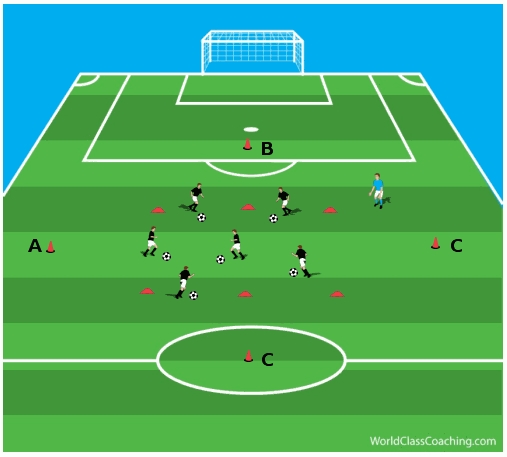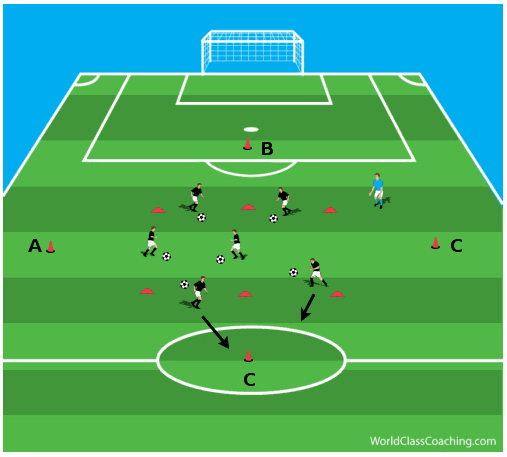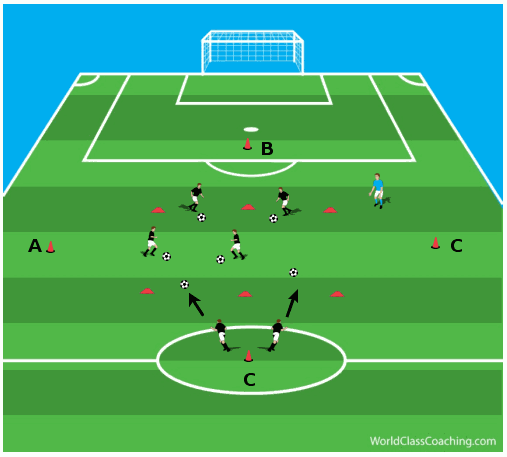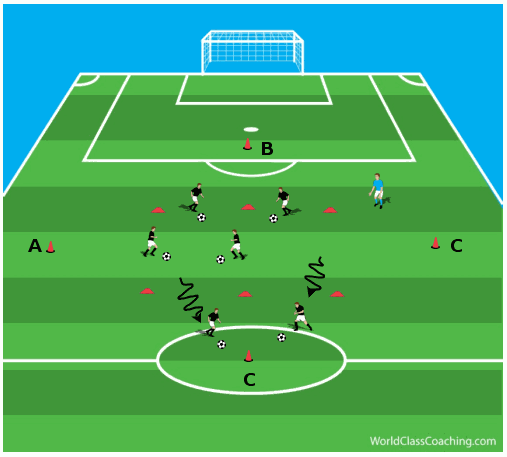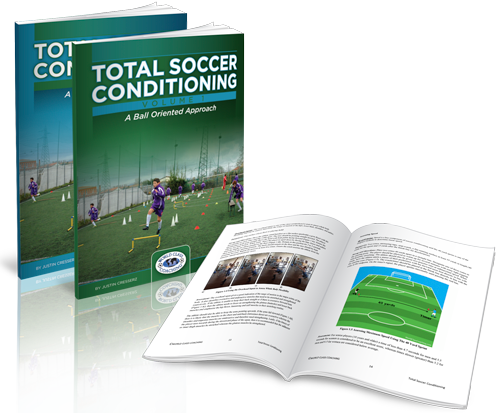By Justin Cresser Author of Total Soccer Conditioning: A Ball Orientated Approach
Being able to take a player on 1 v 1 is an important and beneficial quality for soccer players of any playing position. For the attacking player to be successful in 1 v1 encounters, they must be able to beat the defender with a change of pace or by using a variety of moves and fakes to get around them. Players therefore need to be comfortable and confident at performing different moves, and doing so at speed.
Today’s activity will focus on teaching/practicing various moves and skills using an individual dribbling training format. We have also modified the exercise so that we can target a number of conditioning parameters that are necessary for soccer athletes.
Set-up and Design:
This exercise uses the space between the top of the 18-yard box and the half-way line for the playing area. Begin by setting up a 20 yard by 20 yard grid in the centre of the playing area. Place a small pylon 10 yards away from the middle of each side of this 20 by 20 grid. Give each cone a letter. Divide your players into pairs and give each group a different number. Have each Player dribble around inside this area performing a specific move (scissors, Ronaldinho, Stanley Matthews, etc.) as quickly as possible but under control (Figure 1).
(For simplicity, we have only used 6 players in the illustrations. However, you will likely have between 10 to 14 players when you choose to do this activity, which means 5 to 7 groups of two.)
After a few seconds, the coach will call a specific number as well as the letter of one of the four cones. The pair whose number has been called will leave their balls in the grid and sprint as quickly as possible to the specified cone, touch it, and then sprint back to their ball (Figures 2 and 3). As soon as they get back, have them continue dribbling.
Have another pair go as soon as the first pair returns to the grid. After each group has performed 2 sprints (should take no more than 2 to 3 minutes) have the squad rest for 90 seconds and then repeat the sequence. Perform a total of 3 to 4 sequences. However, ensure you change the move they practice while dribbling after each 3 minute sequence.
This activity targets a number of different conditioning elements including starting speed, acceleration, and aerobic endurance. You can make it more competitive and fun by having the partner who enters the grid last do 10 push-ups (or something similar) before continuing to dribble.
Variation:
You can vary this exercise in a number of ways. You can begin by having the players dribble their ball (instead of sprint) to the specified cone and back (Figure 4).
You can also have the players sprint to the cone and back twice. This will also increase the intensity of the activity.
Lastly, you can incorporate different type of movement patterns that the players perform as they travel to the cone and back. For example, you can have them sprint to the cone and then backpedal as quickly as possible until they reach back to the grid.
Best of Luck,
Justin.
Justin Cresser has coached soccer at various levels both in North America and abroad (Hong Kong and Africa). He is currently the Assistant Technical Director at the Soccer Club of Toronto. He has his Advanced National Diploma from the NSCAA and is also a certified strength and conditioning coach. You can check out Justin's best-selling books here.

